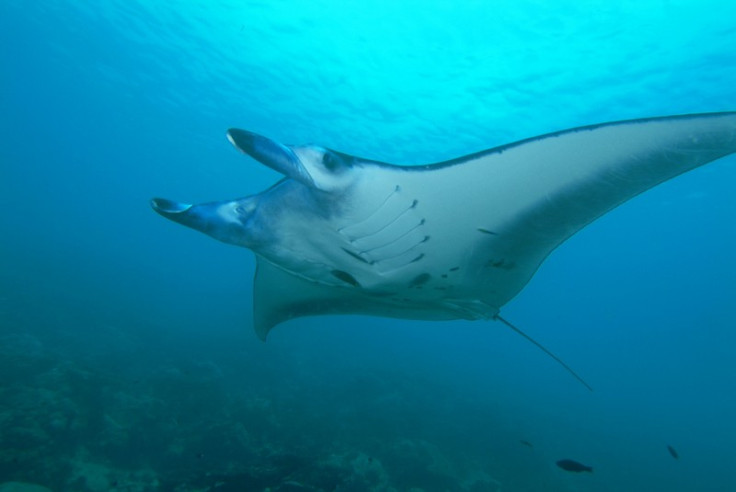Satellite Tags Reveal Mysterious Manta Ray’s Habits and Secret Journey

Satellite tags have revealed the mysterious ocean giant Manta ray's habits and their hidden journey.
An international team of researchers has found more clues about the mysterious Manta ray by using satellite tagging.
"The satellite tag data revealed that some of the rays travelled more than 1,100 kilometres during the study period," said Dr Matthew Witt, researcher at the University of Exeter, in a statement. "The rays spent most of their time traversing coastal areas plentiful in zooplankton and fish eggs from spawning events," he said.
Researchers had attached satellite transmitters to manta rays in the coast of Yucatan Peninsula in Mexico. The tracking devices were attached to the backs of six rays. Among them four were females, one male, and one a juvenile.
Researchers have discovered that the manta rays spent nearly all their time within Mexico's territorial waters (within 200 miles of the coastline), but only 11.5 per cent of the locations gathered from the tagged rays occurred within marine protected areas. The majority of ray locations were recorded in major shipping routes in the region as manta rays could be vulnerable to ship strikes.
"Studies such as this one are critical in developing effective management of manta rays, which appear to be declining worldwide," said Dr Howard Rosenbaum, Director of Wildlife Conservation Society's Ocean Giant Programme, in a statement.
Manta ray is the largest species of rays. The term manta derives from the Spanish word means blanket. As the name suggests, manta rays look like blankets. They can grow up to 25 feet and weigh around 2,400 kilograms, and live up to 20 years.
In spite of its malevolent, bat-like appearance, the manta ray, sometimes referred to as the "devilfish", is harmless to humans and lacks the stinger of the better-known stingray. Manta ray possesses the highest brain to body ratio of all sharks and rays and gives birth to live young, usually one or two "pups" every one or two years.
Manta rays are apparently declining in the Caribbean and in other tropical regions of the world's oceans, in part because they are captured for shark bait and a demand for gill rakers - small, finger-like structures that filter out the ray's minute zooplankton prey - in the traditional Chinese medicinal trade.
"Almost nothing is known about the movements and ecological needs of the manta ray, one of the ocean's largest and least-known species," said Dr Rachel Graham, lead author on the study and director of Wildlife Conservation Society's Gulf and Caribbean Sharks and Rays Programme. "Our real-time data illuminate the previously unseen world of this mythic fish and will help to shape management and conservation strategies for this species," he said.
© Copyright IBTimes 2025. All rights reserved.



















